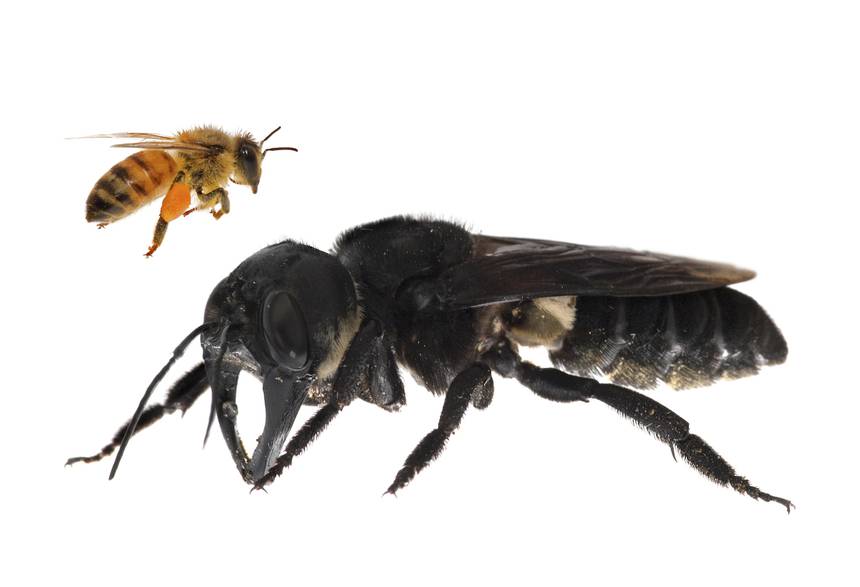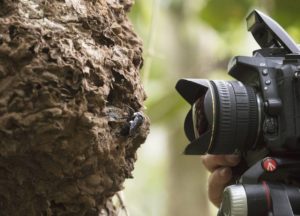 One of the rarest insects in the world, the Wallace’s giant bee, has been found in Indonesia.
One of the rarest insects in the world, the Wallace’s giant bee, has been found in Indonesia.
In 1858, British naturalist Alfred Russel Wallace discovered a tremendous bee while exploring the Indonesian island of Bacan. With a wingspan of two and a half inches – as long as a human thumb – and four times larger than a European honeybee, Wallace described the female as “a large black wasp-like insect, with immense jaws like a stag-beetle.” And thus, the Wallace’s giant bee (Megachile pluto) entered the world of scientific literature.
Now recognized as the world’s largest bee, despite its enormous size it wasn’t seen again until 1981 when entomologist Adam Messer rediscovered it in Indonesia. Messer’s observations of its behaviors – like how it used its giant jaws to gather resin and wood for its nests – provided some insight, but still, the bee remained generally elusive. It wasn’t seen again for decades, making it the “holy grail” of bees.
But now the bodacious bee has been rediscovered once again, according to Global Wildlife Conservation. In January, a search team that set out to find and photograph Wallace’s giant bee found success in Indonesia, bringing hope that the species may still be thriving in the forests.
“It was absolutely breathtaking to see this ‘flying bulldog’ of an insect that we weren’t sure existed anymore, to have real proof right there in front of us in the wild,” said Clay Bolt, a natural history photographer specializing in bees, who took the first photos and video of the species alive after

spending years researching the right habitat type with trip partner, Eli Wyman. “To actually see how beautiful and big the species is in life, to hear the sound of its giant wings thrumming as it flew past my head, was just incredible. My dream is to now use this rediscovery to elevate this bee to a symbol of conservation in this part of Indonesia, and a point of pride for the locals there.”
“Messer’s rediscovery gave us some insight, but we still know next to nothing about this extraordinary insect,” said trip member and bee expert Wyman, an entomologist at Princeton University, and formerly at the American Museum of Natural History, which has a single historical specimen of Wallace’s giant bee. “I hope this rediscovery will spark future research that will give us a deeper understanding of the life history of this very unique bee and inform any future efforts to protect it from extinction.”
This is the second rediscovery of one of Global Wildlife Conservation’s top 25 most wanted species – species that have fallen off the radar and are feared to be extinct. Given the alarming, recent headlines that insects could be gone in a century, the more we can learn about endangered ones, the more we can work to protect them. In the meantime, it’s heartening to know that in the forests of Indonesia, there are bird-sized bees doing their thing.
For a good read, see Bolt’s account of the discovery here.
